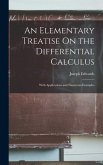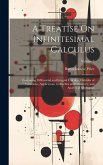This historic book may have numerous typos and missing text. Purchasers can download a free scanned copy of the original book (without typos) from the publisher. Not indexed. Not illustrated. 1886 Excerpt: ...viz., F(x, y) = 0 (2) Required the relation between a and ft. Eliminate y between (1) and (2). We obtain an equation of the form f(x, a, ft) = 0, (3) giving the abscissa of the point of contact of the curve with its envelope. Since the curve touches its envelope, equation (3) must also be true for a contiguous value of x, viz., x + Sx (unless the tangent at the point of contact be parallel to the axis of y, in which case we could have eliminated x between (1) and (2) and proceeded in the same way with y). Hence f(x, a, b) = 0, (4) f(x+Sx, a, b) = 0.1 (5) The latter may be expanded in powers of Sx, when it becomes, df.' f(x, a, b)+dJxSx+... = 0, (6) and therefore in the limit I= If, then, x be eliminated between f(x, a, /3) = 0, f(x, a, /3) = 0, we obtain the relation sought. It will be observed that this is precisely the same process as finding the envelope of jx, y, a, /3)=0, considering a, /3 as the current co-ordinates and x, y as parameters connected by the relation F(x, y) = 0. Ex. Given that x+y=$ is the envelope of-+Y=lt find the necessary relation between a and b. We have +=0, y=b. Hence A'=x', =yK a b "' and by addition 1 = cK N This gives a =?x, b = ch/, and by squaring and adding the relation required. (See Ex., Art. 309.) 313. Evolutes considered as Envelopes. The evolute of a curve has been defined as the locus of the centre of curvature, and it has been shown (Art. 287) that the centre of curvature is the ultimate point of intersection of two consecutive normals. Hence the evolute is the envelope of the normals to a curve. It is from this point of view that the equation of the evolute of a given curve is in general most easily obtained. Ex. To find the evolute of the ellipse-=+?= 1. The equation of the normal at the point whose ecc...
Hinweis: Dieser Artikel kann nur an eine deutsche Lieferadresse ausgeliefert werden.
Hinweis: Dieser Artikel kann nur an eine deutsche Lieferadresse ausgeliefert werden.








